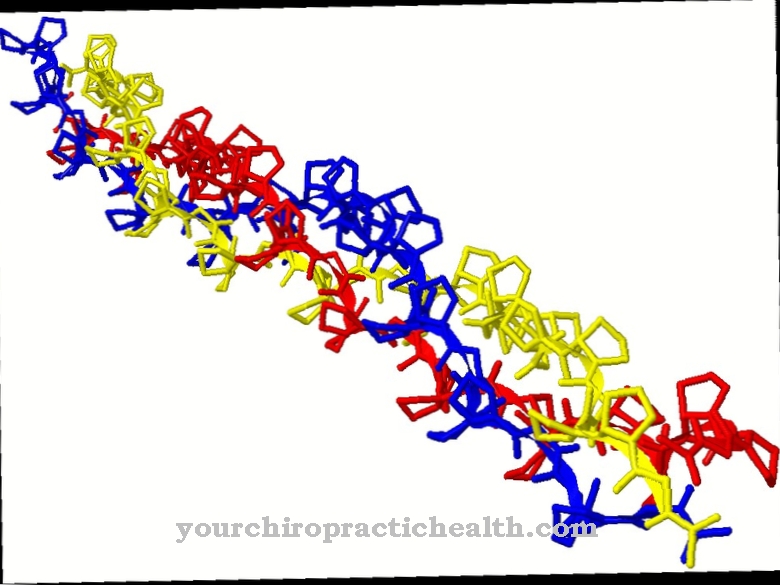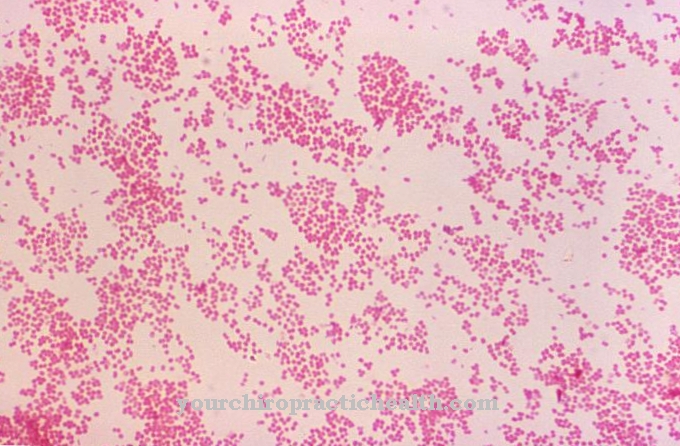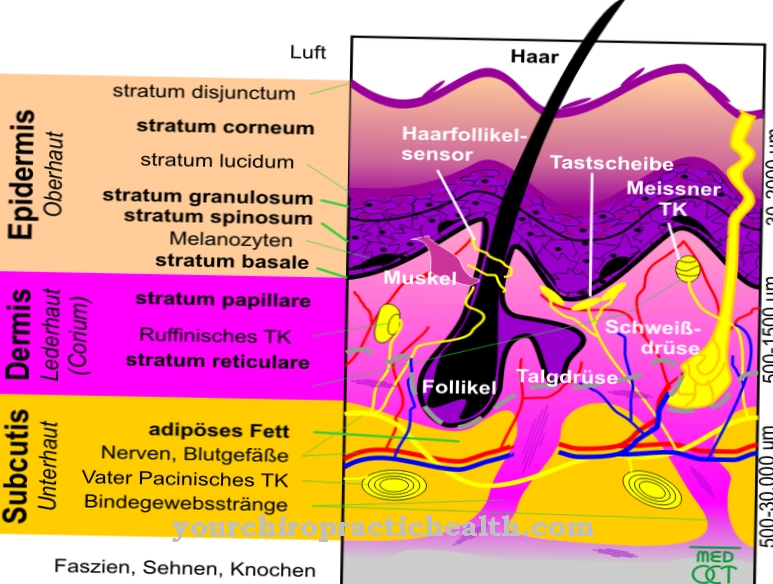What is a Choroidal neovascularization (CNV)? What is it for and in which diseases does it occur? A brief overview of this follows in this article.
What is Choroidal Neovascularization?
Choroidal neovascularization (CNV) is an attempt by the body to bypass an insufficient supply of oxygen and nutrients to the retina. To do this, the body forms other small blood vessels in the eye.
They arise either from the choroid or the choriocapillaris, a network of numerous small blood vessels within the large choroidal vessels and Bruch's membrane.
Function & task

The yellow spot on the retina, the macula, has a high proportion of yellow macular pigment, which, as a complementary color, offers natural protection from the high-energy UV light and blue light for the retina.
The macula is the most metabolically active area in the human body - for a lifetime without our being aware of it. There is a high throughput of energy and nutrients. The arteries provide oxygen and nutrients for the visual cycle. Metabolic waste and carbon dioxide are removed through the veins.
The photoreceptor cells - rods and cones - are erected with one end in the retinal pigment epithelium, which is connected to the choroid via the selectively permeable blood-retinal barrier. In a healthy eye there is a balance between the supply and disposal of metabolic products.
In the course of the human aging process, the network of the choriocapillaris is no longer so well developed: The area of the central macula is then no longer supplied with oxygen and nutrients as well. To compensate for this, the body initiates choroidal neovascularization. However, this can also take a pathological course.
A number of diseases can also result in a lack of oxygen (hypoxia) in the retina. As a result, the VEGF factor is released, a growth factor that accelerates the formation of new vessels in order to remedy the undersupply of the visual cells in the retina. These newly formed vessels always mean that their structure is less precise and their vessel walls are brittle. This leads to edema and bleeding in the retina. Because of this, there is distorted vision.
The visual impairment can be easily determined with the help of an Amsler grid. For this purpose, the center of a grid field is drawn with one eye fixed while the other is covered. If the lines are bent, wavy, or distorted, this is a sign of macular disease that may be behind CNV.
If areas of vision have already failed, scotomas (visual field defects) show up as white or gray spots. If the visual pit is affected, the visual acuity drops rapidly. If only a small area is affected, there are reading difficulties: Individual letters are incomplete, jump or are distorted. Recognizing faces is difficult or becomes impossible in later stages due to the central visual field loss.
You can find your medication here
➔ Medicines for eye infectionsIllnesses & ailments
Age-related macular degeneration (AMD) comes in two forms. In dry AMD, the photoreceptor cells in the central macula starve to death without the release of growth factors. The forerunner of AMD is an accumulation of drusen as accumulations of metabolic waste products, since the retinal pigment epithelium is no longer up to the task of disposing of these products. The final stage of dry AMD is geographical atrophy: the photoreceptor layer is then no longer present. The retinal pigment epithelium no longer has any function at this point. The tissue is thinned. The choroid is now more clearly visible.
If the VEGF factor is expressed, fragile blood vessels are produced in CNV, which are supposed to ensure the supply of the visual cells with oxygen and nutrients. If they leak, edema develops, which can be seen in optical coherence tomography (OCT) as a thickening of the retina in cross section. Visual acuity decreases rapidly. The aim of therapy is to drain the edema. There are several ways to do this. In addition to oral active ingredients with high side effects, there are active ingredients administered directly into the eye with a syringe. This was preceded by sclerotherapy using a laser (Macugen, photodynamic therapy - PDT).
In pathological myopia, changes in the retina are noted. The extra-long eyeball permanently stretches the retina. This increases the risk of retinal detachment and twilight visual impairment due to degenerations in the outer retina. The overstretching leads to a thinner macula. The stretching also causes the blood vessels in the choroid to stretch. The retinal pigment epithelium is also stretched.
This stretching can lead to cracks in the lacquer, which the ophthalmologist sees as fine, branched lines when looking at the ophthalmoscope. At the corresponding point there was a tear in Bruch's membrane and in the retinal pigment epithelium. At the same time there was bleeding beneath the retina. The bleeding results from vessels of a CNV that have grown rapidly at this point of the tear. OCT reveals retinal edema. The final stage is a Fuchs' spot as a slightly raised and pigmented scar in the visual pit with significantly reduced visual acuity.
CNV can also develop from inflammation of the retina and the choroid (chorioretinitis). Toxoplasmosis can develop foci of inflammation on the retina. Even after the inflammation subsides, the CNV can develop from these scars. The same is the case with uveitis.









.jpg)





.jpg)












